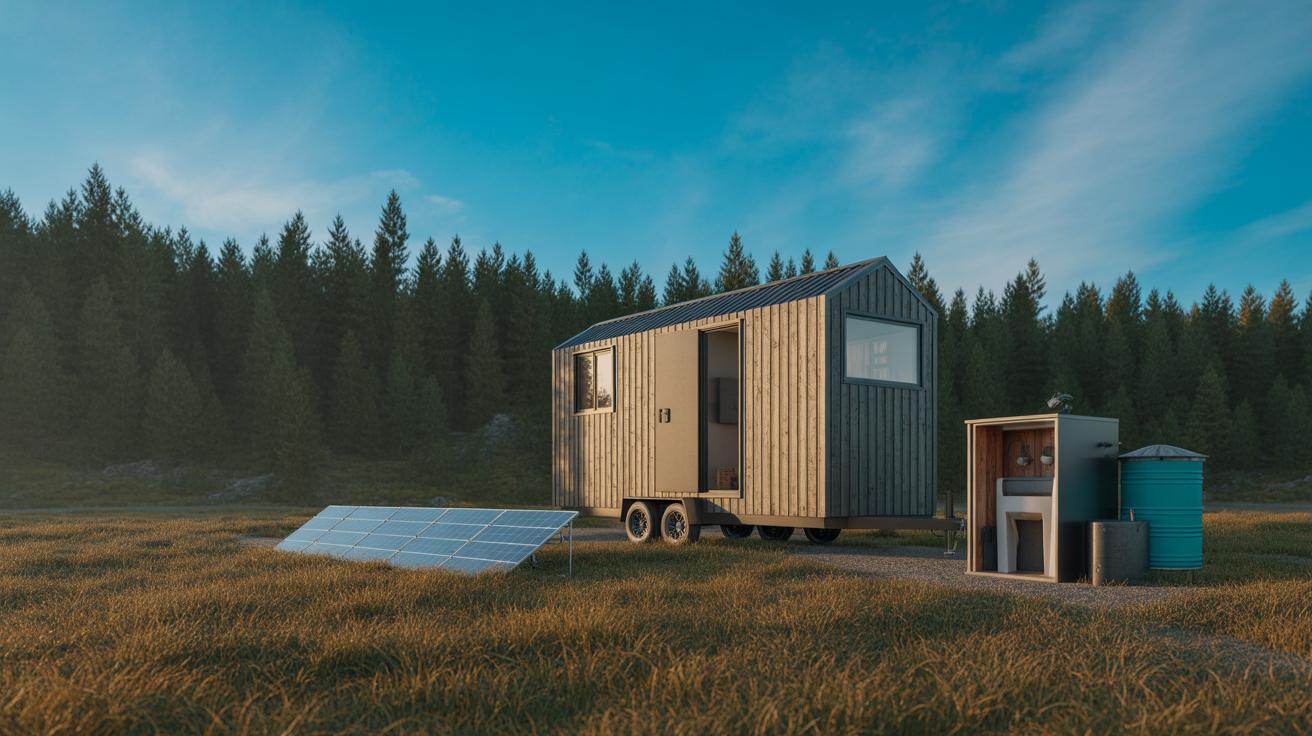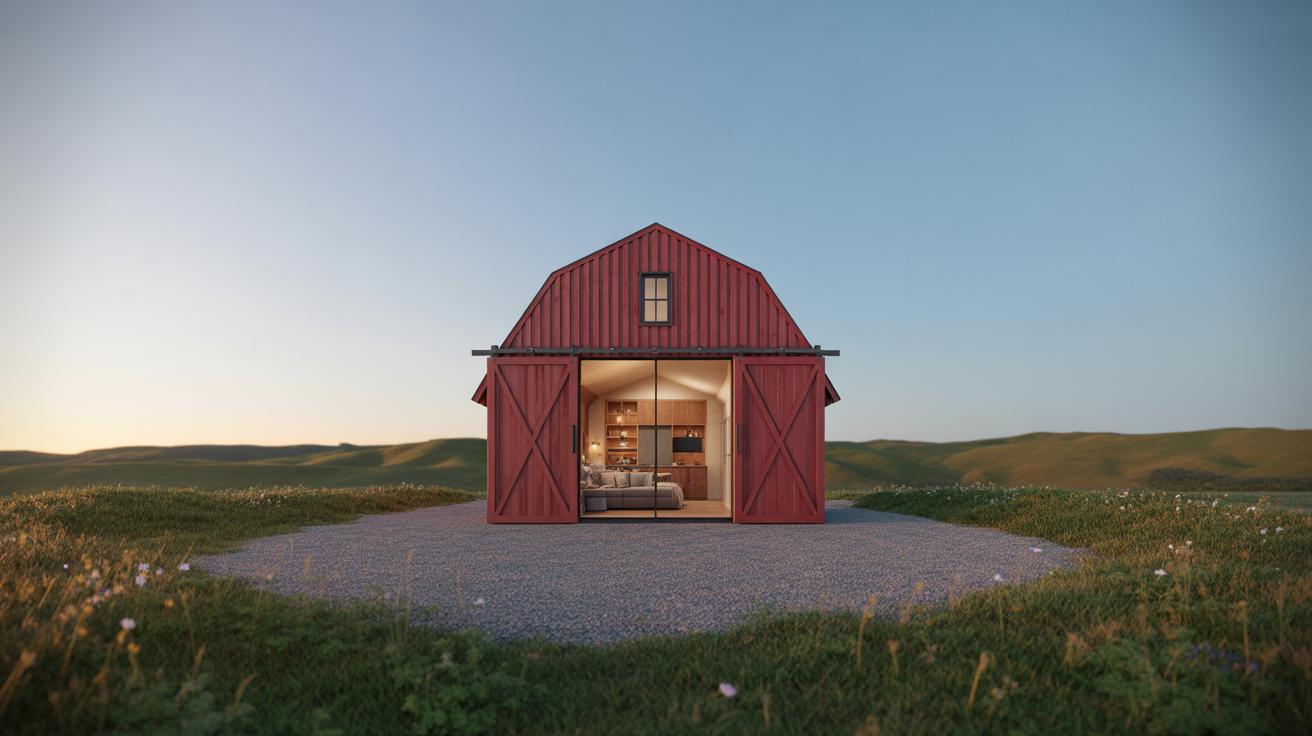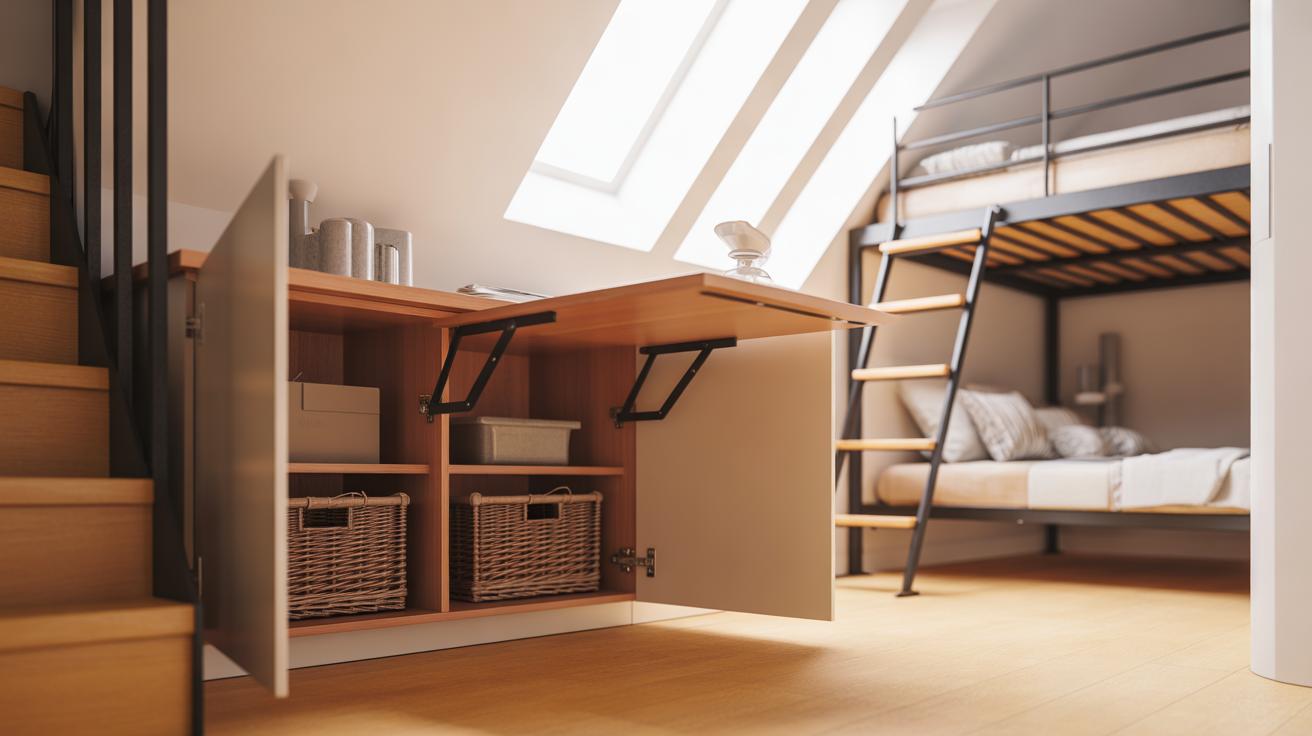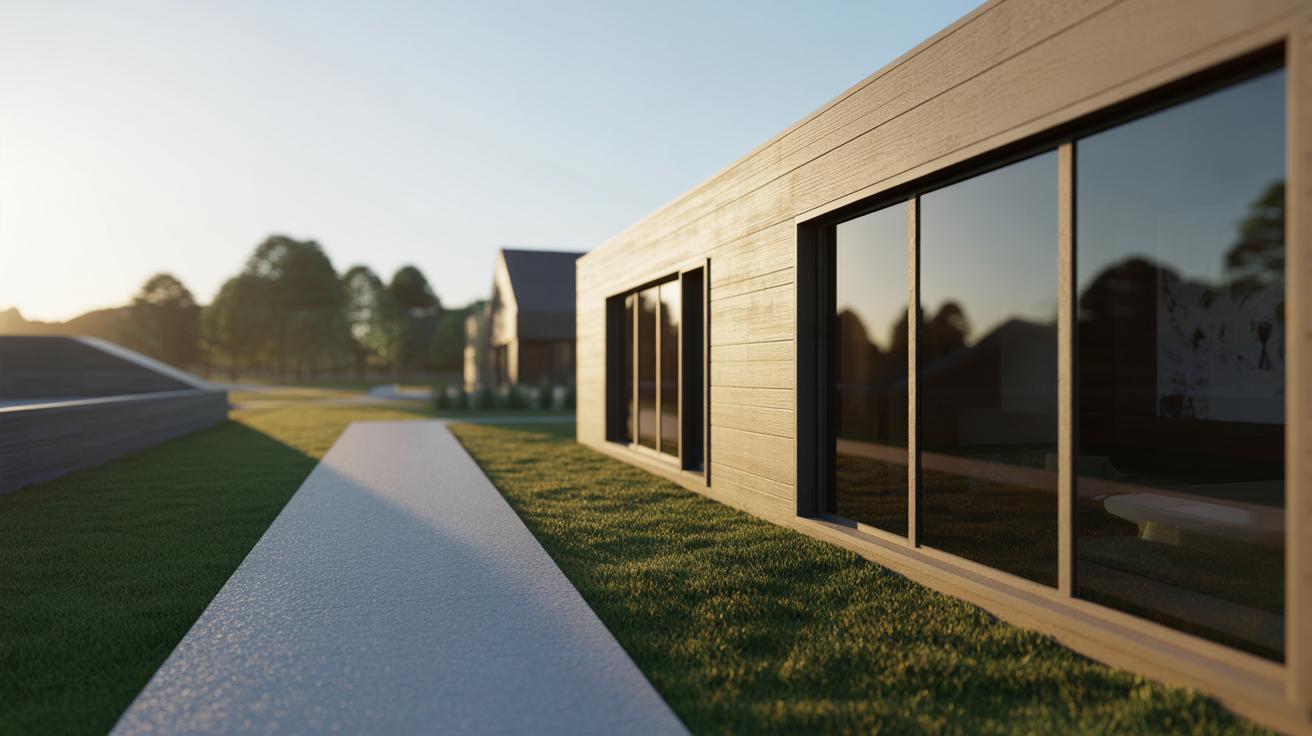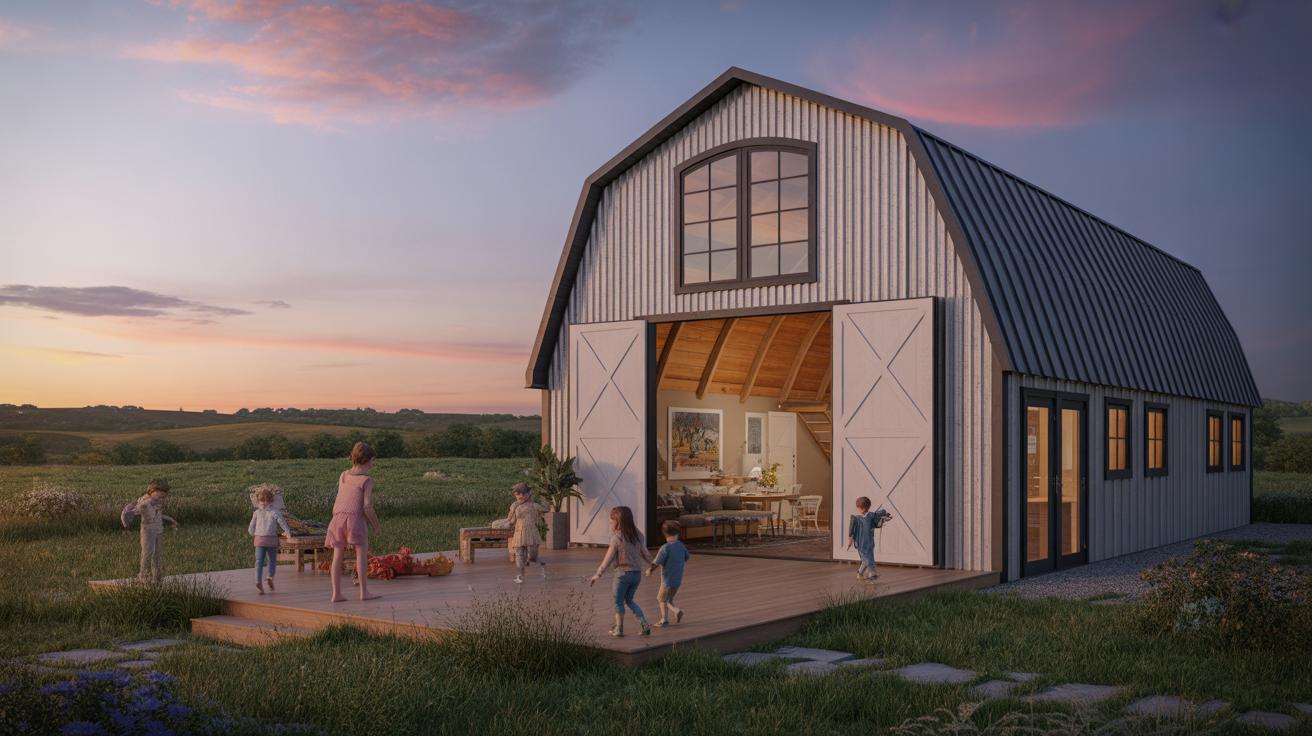Introduction
Barn houses have become a popular choice for many families seeking a warm and spacious home environment. The barn house style, often inspired by converted barns or traditional barn constructions, offers a unique architectural charm. Its open floor plans and rustic elements make it an ideal setting for family gatherings. You might wonder how to design these large spaces to feel welcoming and functional for everyone in your family. Creating a warm barn house interior involves combining comfort, style, and practicality to ensure each gathering feels special and memorable.
Family gatherings bring people together to share moments, meals, and memories. Designing your barn house with these occasions in mind enhances the experience for all attendees. You can incorporate inviting furniture arrangements, cozy lighting, and thoughtful decor elements that highlight the rustic character while promoting comfort. This article will guide you through interior ideas and design principles that help transform your barn house into the perfect venue for warm family get-togethers.
Understanding Barn House Architecture

The Roots of Barn Houses
Barn houses began as agricultural buildings designed to store crops and shelter livestock. Early settlers built them using sturdy local wood and stone, focusing on practicality and durability. Over time, many old barns have been transformed into homes. These conversions keep much of the original structure but add modern comfort. The typical barn layout includes large open areas and high roofs. Thick timber framing and wooden siding are common materials. These elements give barn houses their strong, honest character. Have you noticed how the simple yet solid construction creates a welcoming feeling? This blend of rustic origins and thoughtful design makes barn houses popular for family living.
Key Architectural Features for Interiors
Wide open spaces inside barn houses create fluid, connected rooms perfect for gatherings. Large wooden beams stretch across ceilings, offering both support and visual appeal. These beams often become a defining feature that invites creative decoration. Walls typically have rustic finishes like aged wood, stone, or plaster. High ceilings allow natural light to flood the room, making interiors feel fresh and airy. These architectural traits help design away from clutter and toward comfort. What if your family activities had no limits because of open floor plans? Choosing durable materials and finishes supports daily use while keeping spaces warm and inviting for everyone.
Creating Warmth With Natural Materials

Wood, stone, and metal each bring unique ways to create warmth in barn house interiors. Using these materials thoughtfully invites a natural, inviting feel for family gatherings.
Consider wide-plank wooden floors that show off natural grain and soften the space. Walls lined with reclaimed wood or wood paneling add texture and depth, connecting you to the barn’s history. Furniture with solid wood frames offers both durability and a homely touch, making seating areas cozy and practical.
Stone brings a grounded element, especially when used for fireplace surrounds or feature walls. Its rough texture contrasts nicely with smooth wood surfaces, adding interest without overpowering. Metal fixtures, such as wrought iron light fittings or steel cabinet handles, introduce subtle shine and strength.
Ask yourself how you can mix these materials without cluttering the space. Can a rough stone hearth sit alongside polished wood tables? Is there room for metal accents that tie the design together? Balancing natural materials builds a warm atmosphere perfect for your family.
Wood as a Central Element
Wood naturally invites warmth and comfort in any barn interior. Exposed beams overhead frame the room and create a rustic yet welcoming feel. Wide wooden floorboards give a solid foundation that feels sturdy underfoot, connecting everyone to the space.
Choosing the right wood type influences both look and durability. Oak and maple offer hardness to resist wear from family activities. Pine or cedar add character with softer tones and knots that highlight the barn’s rustic nature. Finishes also matter—matte or satin coatings keep surfaces natural while protecting them from damage.
Wood furniture complements structural elements. Think long farmhouse tables that invite shared meals or benches that encourage togetherness. You can mix polished and raw wood pieces to balance refinement and natural charm.
Stone and Metal for Contrast
Stone elements create focal points and textural depth in barn interiors. A large stone fireplace anchors family gathering spots with a timeless appeal. Stone countertops in kitchens provide a durable, tactile surface that catches the eye without clashing with wood.
Metal adds design contrast and functionality. Black iron chandeliers, copper lighting fixtures, or steel cabinet handles bring sleekness and strength. Look for fixtures with simple, clean lines to harmonize with the barn’s open, uncluttered feel.
Combining stone and metal helps avoid monotony. Can you install a stone hearth framed by iron tools? Would a brushed steel pendant lamp over a wood island brighten your kitchen? Thoughtful pairing of these materials enriches the space and supports family togetherness.
Furniture Choices for Family Comfort
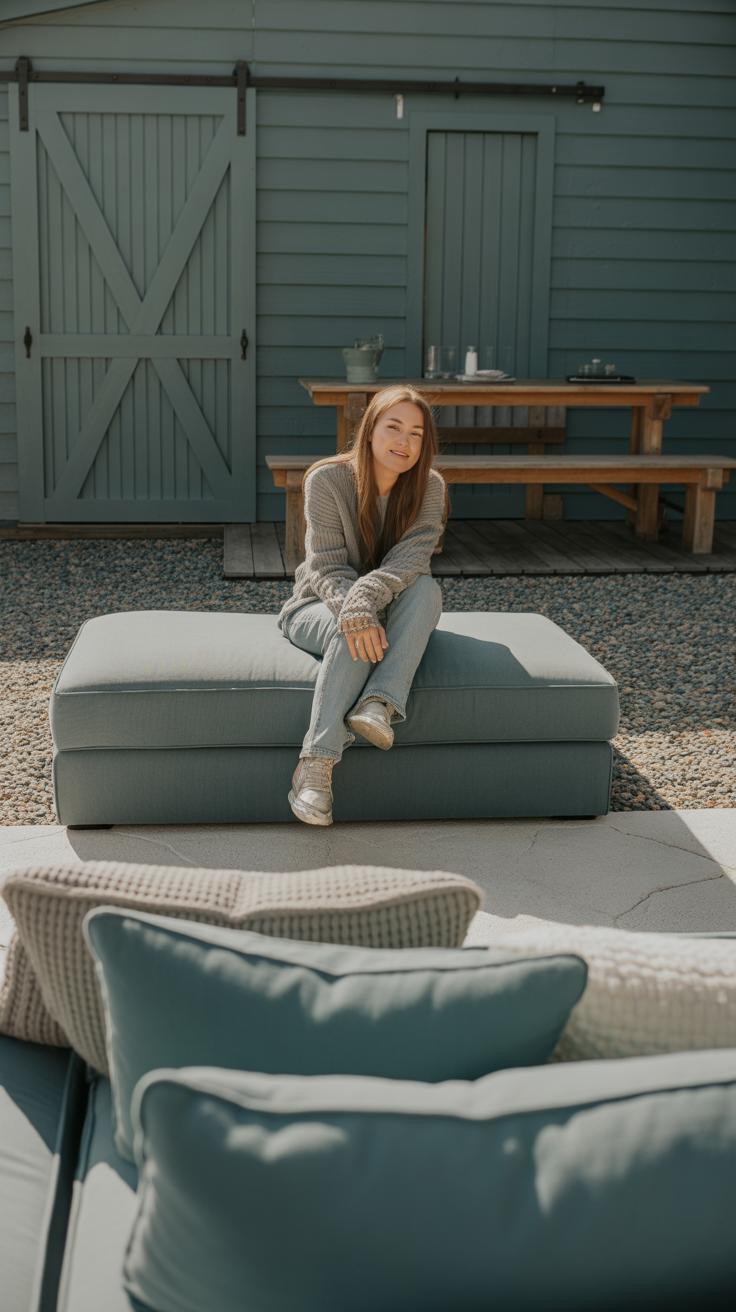
Choosing furniture that invites relaxation and easy conversation forms the core of a barn house interior designed for family gatherings. Opt for pieces that support comfort and flexibility, so everyone feels welcome and at ease.
Look for sofas and chairs with a soft but supportive feel. Materials like leather or tightly woven fabric stand up well to wear and spills while still feeling comfortable. Consider sectional sofas that can be rearranged to fit different group sizes or activities. Benches can offer extra seating without taking up much space and add a rustic touch.
Durability matters because family gatherings can be lively. Frames made of solid wood or metal handle frequent use better. Cushions with removable covers make cleaning simpler after busy days. Thinking about your family’s routines helps in selecting furniture that both looks good and lasts through many gatherings.
Seating That Brings People Together
Large sofas create an inviting place where everyone can sit close and chat. Aim for sofas deep enough for people to curl up or share seating comfortably. Adding a couple of armchairs allows for personal space yet keeps the group connected.
Benches work well around dining or coffee tables and let you fit more people in a cozy way. Choose cushions with fabrics that feel soft but resist stains. Fabrics like microfiber or treated cotton are friendly for families and easy to maintain.
Extra throw pillows can encourage use by making seating more inviting. Pick covers in warm tones or patterns that reflect your style but keep washing needs in mind. Does your family prefer relaxed lounging or neat seating? This helps guide the best seating options for your space.
Functional Tables and Storage
Gatherings need tables that bring everyone together for meals and activities. Long dining tables offer enough room for big groups and foster conversations. Smaller side and coffee tables fill gaps, providing surfaces for drinks, snacks, or games without crowding the room.
Storage plays a vital role in keeping the barn house tidy. Use wooden chests or cupboards with a rustic look that matches the barn vibe. Open shelving can display family treasures while keeping essentials close at hand.
Consider furniture that doubles as storage, like benches with hidden compartments. This keeps clutter out of sight without sacrificing style. How can your table and storage choices make family time smoother and more enjoyable?
Lighting Strategies to Enhance Warmth
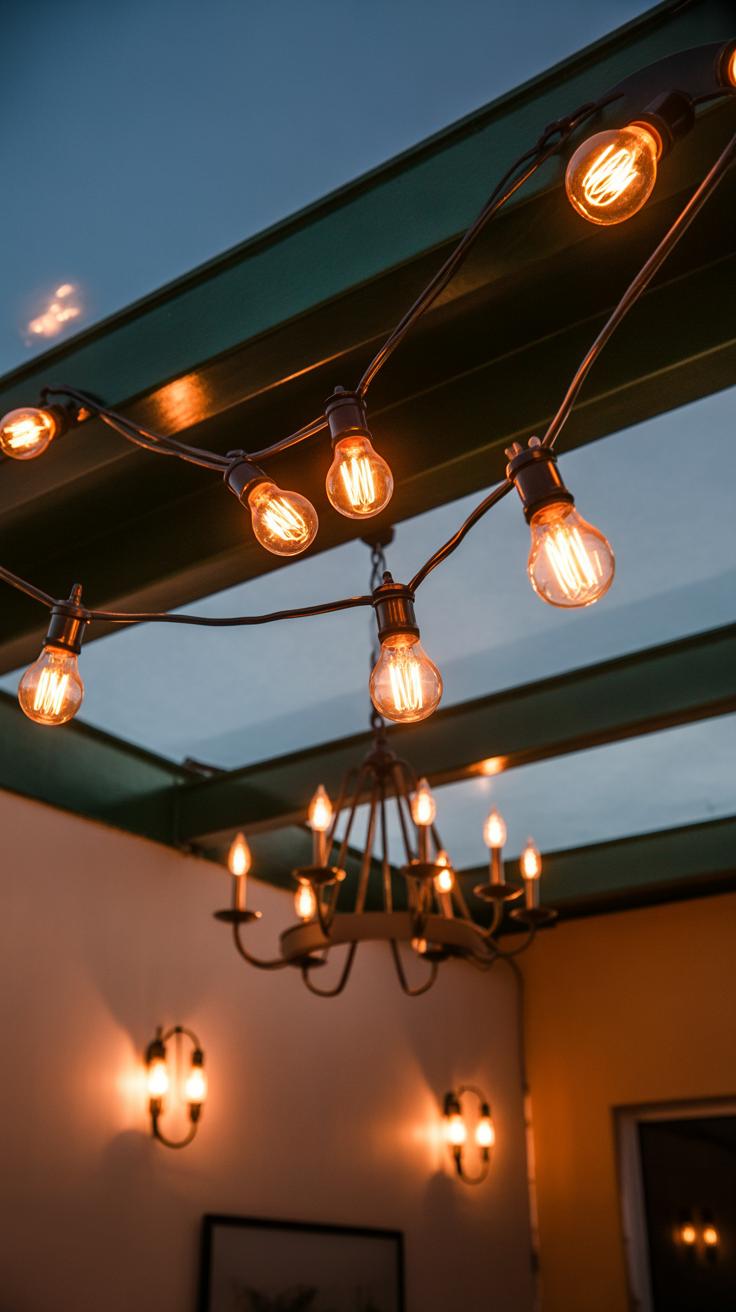
Lighting shapes how your barn house feels and functions, especially during family gatherings. It affects both the mood and the ease of doing activities together. A mix of ambient, task, and accent lighting can highlight the beauty of barn interiors while making your space comfortable and practical.
Ambient lighting sets the overall tone. Task lighting helps when you need focused light for specific jobs like cooking or reading. Accent lighting draws attention to architectural features or decorations that add character to your home.
Think about the areas where your family spends the most time. How can lighting adapt to different activities and times of day? Installing dimmers or adjustable lights gives you control over brightness levels. This versatility allows you to create a cozy setting for relaxing or a bright space for active moments.
Balancing these types of lighting will make your barn house interior more inviting and improve how you use your rooms during family time.
Soft Ambient Lighting
Using chandeliers, pendant lights, and wall sconces can fill your barn house with soft, even light. These fixtures gently illuminate the space and emphasize architectural features like exposed beams or textured walls. Their shape and style can also add charm.
Dimmers are useful tools for ambient lighting. You can lower the brightness for a quiet evening or increase it for lively family events. For example, a wrought-iron chandelier hanging above the dining table creates a warm glow while letting your family easily see each other.
Wall sconces placed strategically along hallways or near seating areas add layers of light without overwhelming the room. Choose fixtures that complement your barn’s rustic look to blend form and function.
Focused Task Lighting
Activities like cooking, reading, or playing games need clear, direct light. Under-cabinet lights in the kitchen brighten work surfaces, helping you prepare meals safely and efficiently. Table lamps placed near seating or reading nooks provide extra illumination without flooding the whole room.
Adjustable fixtures, like swing-arm lamps or track lighting, offer flexibility. You can aim light exactly where you need it during family gatherings or when handling specific tasks. These options add convenience by minimizing shadows and glare.
Consider installing bright, focused lights in places where detailed work happens. This keeps the space usable without sacrificing the cozy atmosphere created by softer ambient lighting. How will you arrange your task lighting to support your family’s activities?
Color Palettes That Convey Warmth

Choosing the right colors can change how your barn house feels to everyone inside. Natural light and wooden beams work best with colors that reflect earth and nature. A carefully picked palette helps make the space feel welcoming for family gatherings.
Neutral tones like beige, cream, soft brown, and warm gray create a calm background. These colors anchor the room and echo the wooden surfaces common in barn interiors. They relax your mind and make it easier to unwind after a busy day. Imagine your walls painted in warm gray or soft cream, perfectly blending with natural wood floors and ceiling beams.
Adding small touches of brighter colors helps bring life without overwhelming the calm. Burnt orange, mustard yellow, and deep red add warmth and energy. Place these colors in cushions, rugs, or throw blankets. Artwork or a single chair in these hues can catch the eye and lift the room’s mood.
Have you thought about how color makes your family feel at home in your barn house? Using neutral tones and warm accents creates a cozy space where everyone wants to gather. How might you change your existing color choices to invite more comfort and togetherness?
Base Colors from Nature
Start with base colors inspired by natural materials surrounding your barn home. Beige, cream, soft browns, and warm grays work best to build a foundation for your decor. These tones mirror the wood, stone, and earth seen outside, making your space feel connected to nature.
These colors help your mind relax. Soft brown walls or cream ceilings make the barn interior less harsh and more welcoming. They also allow other design elements to stand out without competing with your space.
Wood surfaces shine when paired with these base tones. Light beige walls bring out the rich texture of wood beams. Warm gray makes wooden floors and furniture stand out while maintaining a calm atmosphere.
Do your current walls feel too bright or cold? Consider switching to these earth-based colors to create calm and inviting surroundings for your family.
Accent Colors for Cozy Appeal
Accent colors are where your barn house gets its personality. Warm shades like burnt orange, mustard yellow, and deep red are perfect choices. These colors create a sense of energy and comfort without overpowering your neutral base.
Use accent colors sparingly. Add throw pillows in deep red or a burnt orange blanket over a sofa to add interest. Choose artwork with touches of mustard yellow or a decorative vase to bring warmth to corners. These pops of color catch the eye and invite people to linger.
Combining soft base colors with bursts of warm accents helps rooms feel cozy and alive. Your family will notice the difference when they enter a space that balances calm and warmth.
Could adding small accents change the feel of your living room or dining space? What colors would you choose to make your barn house feel more welcoming without clashing with existing elements?
Decor and Accessories to Personalize Space
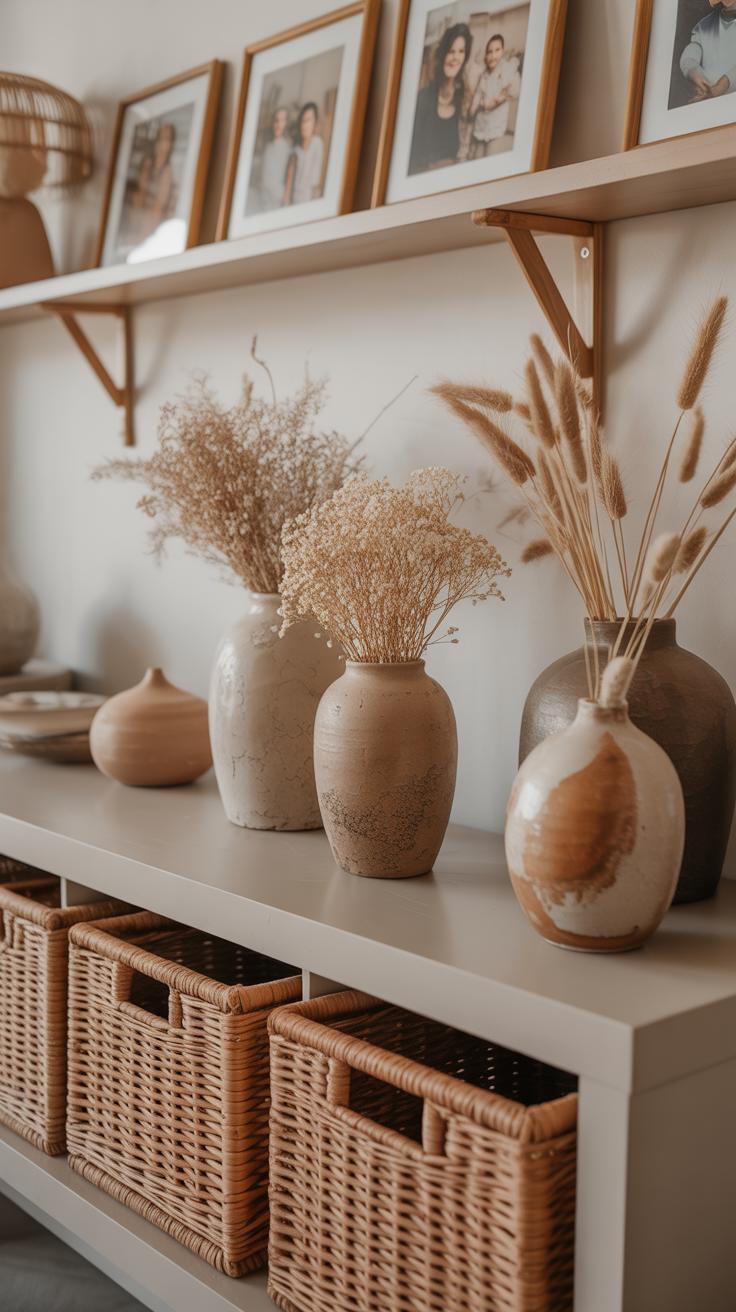
Creating a barn house interior that feels warm and inviting means adding layers that tell your family’s story. Textiles, art, and personal items work together to shape a space where everyone feels at home.
Think about how rugs underfoot can soften hard barn floors and add warmth. Throws and pillows on sofas invite everyone to sit close and relax. These elements build texture and comfort.
Art and photos bring personality to wide barn walls. They make the space unique to your family and highlight memories worth sharing during gatherings.
Choose accessories that reflect your family’s interests and history. Incorporate items like old farm tools as decor or heirlooms passed down. These details make the barn house more than a building—they make it a gathering place filled with meaning.
Textiles and Soft Furnishings
Rugs provide warmth and create distinct areas in an open barn layout. Wool or woven rugs hold up well to heavy foot traffic from family events.
Throws add color and an inviting feel. Pick fabrics like cotton or linen blends for a soft touch that’s easy to wash after kids spill snacks.
Pillows bring comfort and catch the eye with patterns or muted earth tones that fit a rustic style. Layering different sizes and textures can keep the look dynamic without feeling cluttered.
Curtains offer privacy and soften sunlight streaming through large barn windows. Choose heavier fabrics for winter warmth or light, breathable linen for summer comfort. Consider how curtains tie into your overall color scheme to keep cohesion.
Art and Personal Touches
Display family photos in simple wooden frames that match barn wood tones to keep a natural look. Arrange pictures to encourage storytelling during visits.
Choose artwork that reflects rural life, nature, or your family’s heritage. Paintings or prints with simple lines and earthy colors enhance the barn’s architecture without competing with its charm.
Decorative objects like vintage farm tools, handmade pottery, or woven baskets bring history and craftsmanship into your space. These pieces invite curiosity and conversation among family members.
When personalizing your barn house, ask yourself what memories or values you want to highlight. What do your chosen items say about the people who gather here? This reflection guides meaningful decoration that makes your barn house truly yours.
Designing Flexible Spaces for Gatherings

Creating spaces that work for different family activities helps everyone feel included and comfortable during gatherings. Your barn house should adapt to various needs, from dinner parties to quiet reading time or playful moments with kids.
Choose furniture that moves easily and serves multiple purposes. A dining table can double as a game table. Chairs with simple designs can be rearranged without making the space feel crowded. Avoid filling rooms with too many pieces that limit movement.
Consider how your layout supports flow. Can people move freely between areas without bumping into furniture? Think about storage options that keep clutter away but easy to access when needed. Will your space invite group conversations or allow for private moments?
How flexible is your barn house? Small changes in furniture and layout can turn one space into many, making family time more enjoyable and relaxed.
Open Layouts That Encourage Interaction
Design open layouts that bring your kitchen, dining, and living rooms together. This connection makes it easy for family members to talk and share activities, even if they’re doing different things.
Keep sight lines clear by avoiding tall furniture or large partitions. An island in the kitchen can serve as a spot for food prep and casual chatting. Arrange sofas and chairs to face each other without blocking pathways.
Think about how people will move through the space. A smooth flow helps everyone stay involved. When cooking, relaxing, or playing games, being able to see and hear each other keeps the energy lively and connected.
Zoned Areas for Different Uses
Set up distinct zones to separate dining, relaxing, and play without breaking the open feel. Use area rugs to ground each zone and signal its purpose. A soft rug under the dining table helps define that space, while a plush rug in the sitting area invites comfort.
Arrange furniture to create natural boundaries. For instance, a sofa’s back can mark the edge of a play area. Use lighting to highlight each zone—pendant lights over the dining table and floor lamps near seating areas offer warmth and function.
What activities happen most in your barn house? Tailor your zones to support those moments, making sure each area feels purposeful yet connected to the whole.
Maintaining Warmth and Comfort YearRound
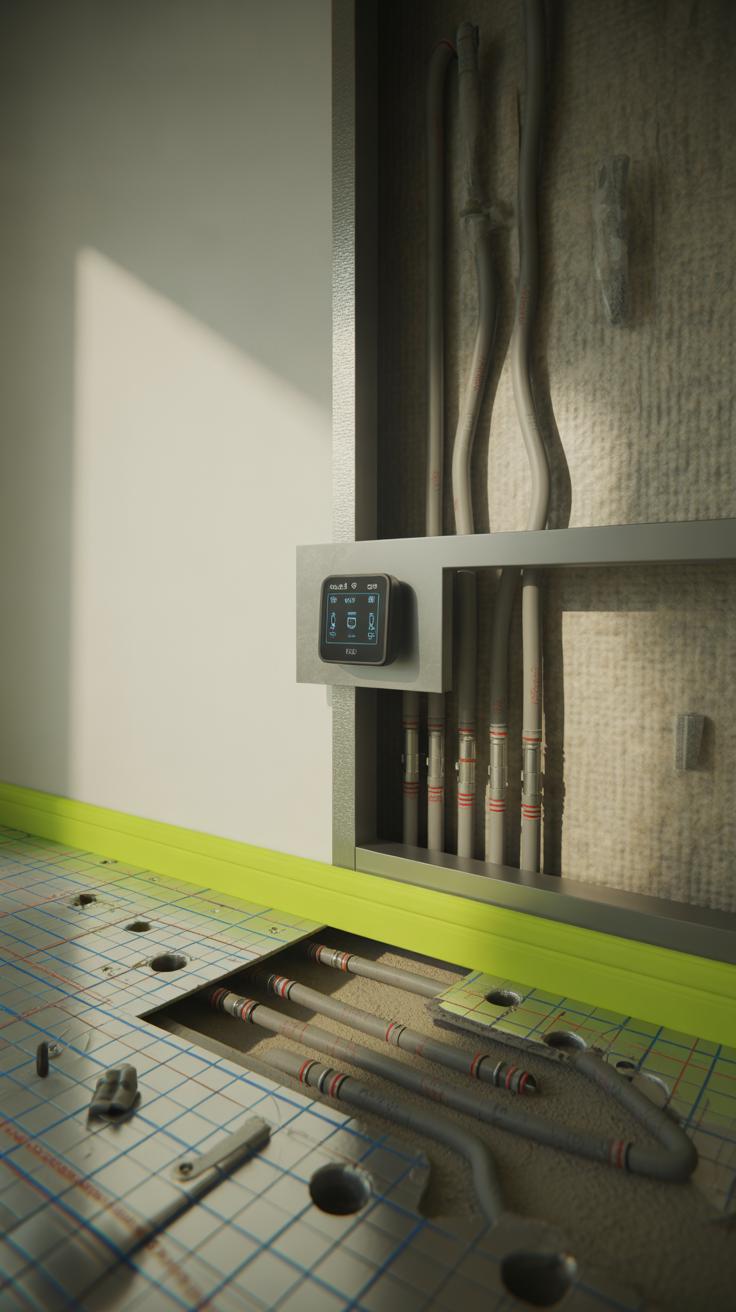
Keeping your barn house warm and comfortable through every season means balancing insulation, heating, and airflow. Insulation preserves heat in winter and blocks excess heat in summer, all without hiding the beautiful barn structures you love. Materials like spray foam or wool can fit snugly into walls and rafters, blending with rustic wood beams.
Heating solutions should match the barn’s character. A vintage cast-iron wood stove adds charm while providing steady warmth. Radiant floor heating is another option that keeps feet warm without cluttering space with bulky heaters. Efficient fireplaces offer both heat and a cozy focal point for family gatherings.
Managing airflow helps maintain fresh air when many people are inside, preventing stuffiness. Ceiling fans gently circulate air without breaking the barn’s aesthetic. Operable windows let you invite fresh breezes when needed. Adding vents in the roof can pull out hot air during warmer months, keeping everyone comfortable year-round.
Insulation and Heating Options
Choosing insulation materials that do not cover up the barn’s interior wood adds both comfort and style. Wool, cork, or cellulose insulation fits between beams and behind walls while keeping the rustic look visible. Spray foam works well to fill hard-to-reach spaces, sealing out cold drafts.
For heating, wood stoves stand out. You control the heat level and enjoy the crackling sound and warmth. Radiant floor heating fits below wooden or stone floors and warms the entire area evenly. Fireplaces with glass doors combine elegance with function, conserving heat while letting you enjoy the flames.
Think about your family’s routine. Would you prefer the steady heat of radiant floors or the traditional feel of a wood stove? Many barns use a mix of these, layering comfort to adapt to chilly winter nights and crisp autumn days.
Ventilation and Airflow Management
Fresh air becomes critical when your barn house fills with family during celebrations. Ceiling fans can keep air moving without disturbing the calm look of exposed beams. Fans with wooden blades complement the barn style and bring a gentle breeze to warm rooms.
Windows that open wide offer natural ventilation. Positioning them across from each other creates cross-breezes that cool the space quickly. Adding roof vents helps remove rising heat in summer, especially important when many people gather in one place.
Consider how often you host large groups. Can you install vents that open and close easily? Would window screens keep bugs out while letting air flow? Thoughtful ventilation keeps your barn pleasant without losing charm or warmth during colder months.
Tips for Hosting Memorable Family Gatherings
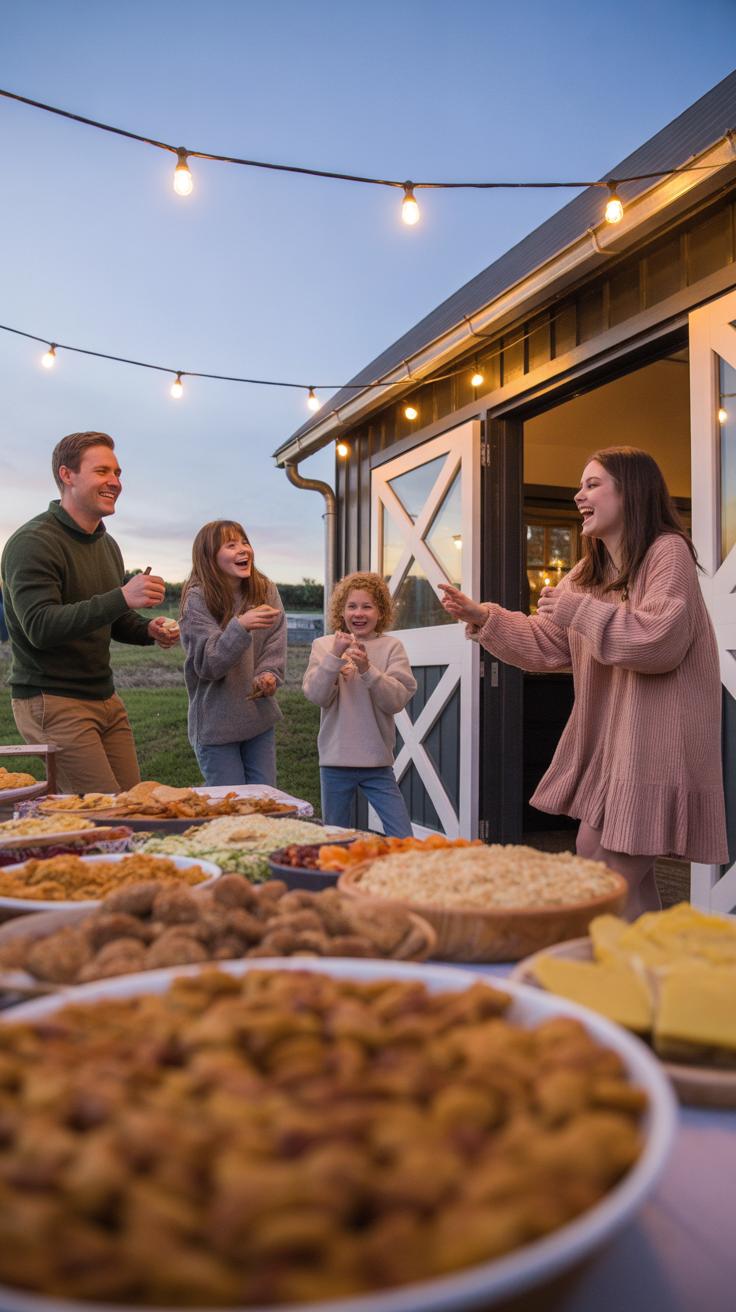
Preparing the Space
Start by giving the barn house a thorough cleaning, focusing on high-traffic areas where guests will gather. Clear away clutter to make the space feel open and welcoming. Arrange seating so family members can face each other and chat easily. Use a mix of chairs, benches, and cushions to provide comfort for everyone.
Set up dining areas with enough room for people to move around freely. Consider starting with a long table for meals but keep some open space nearby for casual mingling. Place essential items like napkins, utensils, and drinks within easy reach to avoid crowding.
Think about accessibility. Are there steps that might be hard for older relatives? Can you create wide pathways without obstacles? These small adjustments let everyone join in without trouble.
Encouraging Connection and Comfort
Choose lighting that feels warm but not too bright. String lights or lamps with soft bulbs can bring a relaxed mood after dark. Play background music that suits a variety of tastes but keeps conversations easy.
Offer activities that invite interaction, such as board games, storytelling corners, or simple arts and crafts. These give family members a chance to connect beyond eating and chatting. Have blankets or throw pillows within reach to encourage everyone to settle in and stay awhile.
Personal touches matter. Display family photos, prepare favorite snacks, or write small notes welcoming guests. Ask yourself: how can you make each person feel noticed and valued in this space? These details turn an ordinary event into a gathering everyone will remember.
Conclusions
Designing a barn house interior for family gatherings focuses on creating a space that balances openness with warmth. You can achieve this by choosing natural materials, comfortable furnishings, and lighting that enhances the barn’s rustic charm. Including multi-functional areas allows your space to adapt easily during different types of family events. Thinking about circulation and seating also helps everyone feel connected and comfortable during gatherings. Are you ready to make your barn house a welcoming retreat for your family? Simple adjustments can turn your barn into a heartfelt home.
Remember that your barn house interior reflects your style and family needs. Personal touches and thoughtful planning encourage positive interactions and lasting memories during family gatherings. Whether your barn house is a conversion or built from scratch, focus on enhancing its natural features and embracing a warm atmosphere. How might you create spaces that invite joy and connection for your loved ones? With practical design decisions and attention to comfort, your barn house can become a cherished center for family life.



